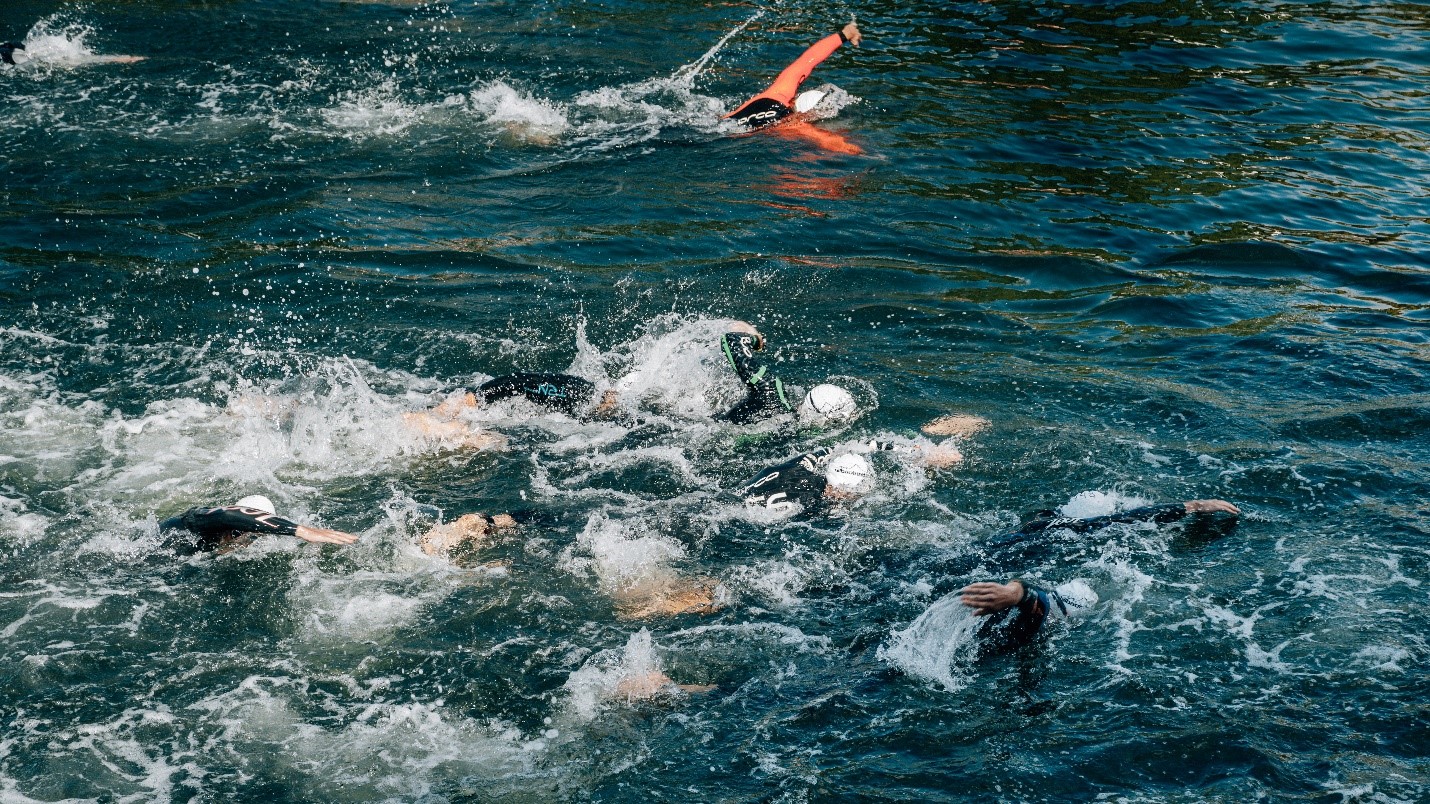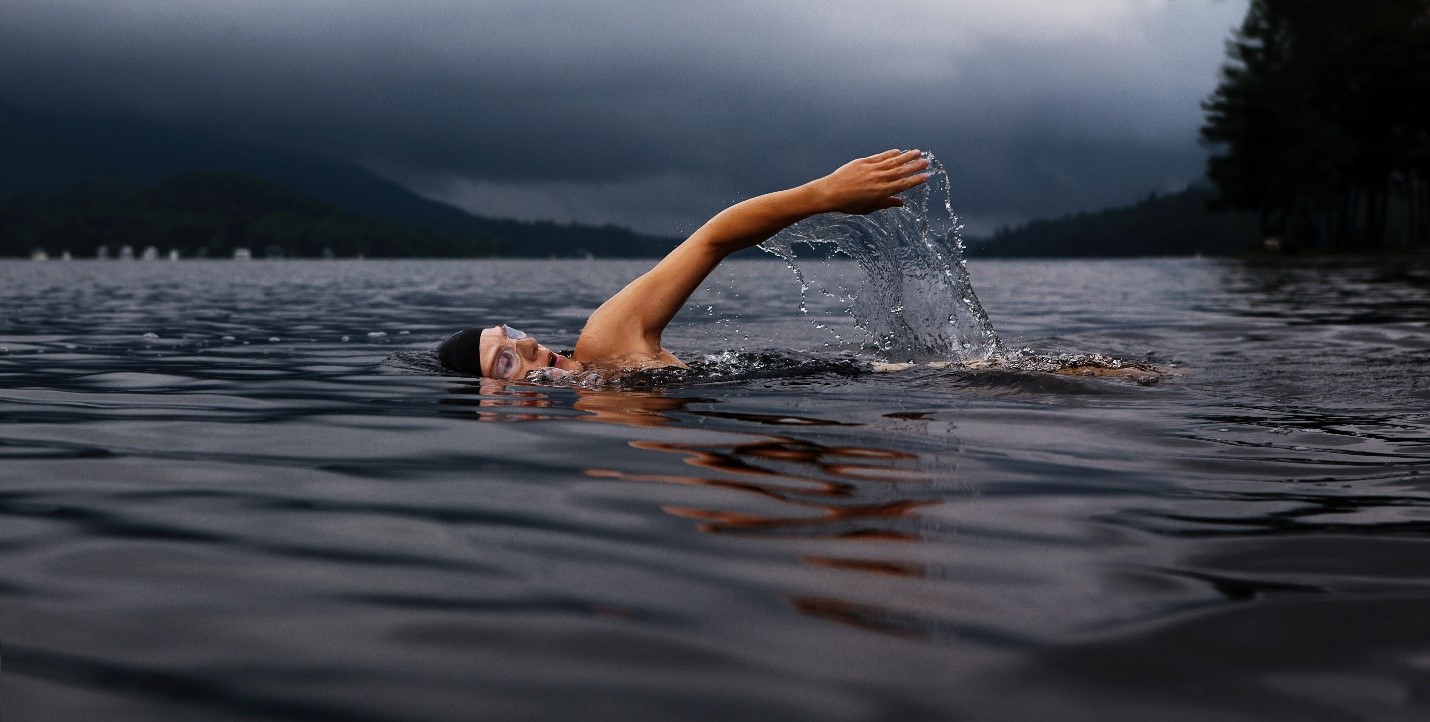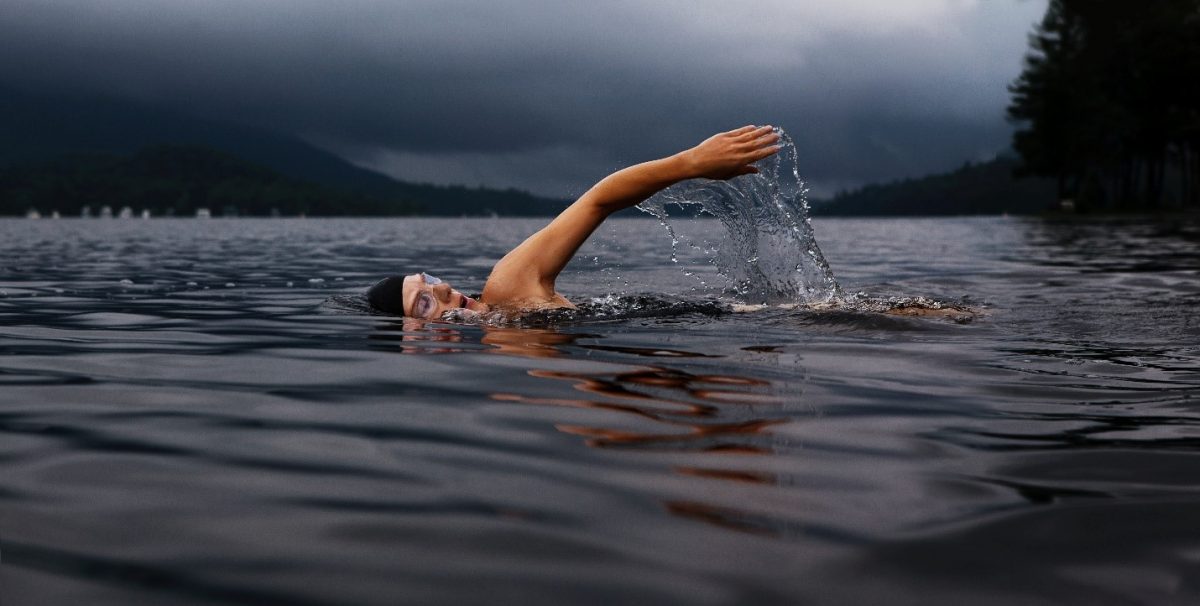A good pool swimmer is not always fast in open water. Here are some important differences you have to pay attention to when swimming in the wild?

Daniela has trained hard. She even swam in a wetsuit in the indoor pool one or two times to get used to the special water situation. She feels good, is well prepared. The only thing is that she was hardly in the lake. The water temperatures were too cold to train. Now she is standing there in the ankle-deep water with her goggles on. Only a few seconds to the start, 1.5 kilometres lie ahead of her. It is windy. The waves ripple against the light. Then it starts: With the starting signal, the shore near the start turns into a foaming wave pool within seconds, Daniela in the middle of it. Her goggles slip, she swallows water, pushing and shoving brings her into breathlessness and panic. At some point she is spat to the edge by the masses, tries to calm down, moves her goggles to the right position and swims slowly behind the field in a breaststroke of frustration.
The scene just described is not an unrealistic horror scenario, but a quite possible occurrence at a triathlon. A triathlon start in the crowd, in a group of nervous athletes, can only be planned to a limited extent. Almost anything can happen if you leave it to chance. In open water, it is not always the best who are fastest, but the smartest and those with a lot of practice.
The following points can make swimming in the lake more difficult:

- Restless water surface: Swimming in the early morning with a glassy water surface can be a unique experience, but often the water surface at a competition is restless and in strong winds the waves and currents can lead to unpredictable situations.
- Orientation above water: Strong waves not only make swimming and breathing more difficult, but also orientation, because you often can hardly see over the waves.
- Underwater view: In open waters, visibility under water is severely limited. The bottom of the lake is usually not visible, no line on the bottom gives you direction, you swim in “empty” space.
- Debris/Competitors: Sea plants (river swimming), driftwood (after thunderstorms in mountain waters) or swimming in a group impair the swimming technique and above all the sensation (discomfort). The factors mentioned above cannot be trained either in the indoor pool or in theory. So the most important tip for every potential tria- or gigathlete who has to complete his swimming distance in a lake or river is clear:
Practice swimming in open water as often as possible!
Preferably short and frequent. In colder climates this is not always an easy task, because many lakes are not suitable for swimming before June. Nevertheless, it is better to jump into the lake or river for ten minutes as soon as possible and get used to the conditions, rather than just doing training kilometres in an indoor pool. To ensure safety and fun, you should:
- Swim outdoors regularly: A cool swim in the morning works wonders. It does not always have to be a long session. Rather, it is more a matter of getting used to swimming in the lake.
- Always Swim in Pairs: This makes both motivation and orientation much easier. Swimming in a group would be ideal, of course, so you can practice swimming in the slipstream: When swimming, the “slipstream” plays a role that should not be underestimated, as the energy saving is a good 5%. If you swim directly at the feet of the person in front of you, you save energy and in addition – if the “locomotive” is experienced – you can easily orientate yourself. Swimming “hand to foot” in a group can be trained well in a swimming club.
- Swim with a boat companion: This luxury version offers the possibility to orientate yourself on the boat or to practice orientation on distant destinations (buoys, church tower, etc.). The two of you can alternate between swimming and rowing.
- Swim near the shore: Parallel to the shore, there is no danger of being overlooked by motorboats.
- Wear swim caps: Wear white or yellow swim cap for better visibility during training. Silicone caps also insulate against cold. Because a lot of heat is lost, especially over the head.
- Breathe on both sides: Breathing on both sides is a great advantage when the wind conditions change and the waves hit your face. Or also when you want to orientate yourself on other swimmers.
- Apply sun protection: Use sunscreen depending on weather conditions. Do not forget the lips.
- Exercise even in the waves: The challenge is a little bit greater, but the gain is priceless. These experiences should not be encountered for the first time in a competition.
- Enjoy nature: Swimming in open water is a special experience. Try to enjoy the weightlessness in the water.
Wetsuit Fit
When people talk about swimming in the open water in a triathlon, the wetsuit automatically comes into play. In most open water races, wetsuits are a factor. Especially for weaker swimmers, the additional buoyancy of the suit is a real blessing. The water position-especially the position of the legs-is massively improved by the neoprene. You lie in the water like a submarine and swim practically “downwards”. The leg stroke only plays a stabilizing role. The time saving is quickly two to three minutes per kilometer. The legs can be spared for the upcoming load on the bike and the neoprene also protects against cold.
With neoprene, comfort and protection against the cold are decisive in addition to the water position. The suit must fit tightly to the body and should not wrinkle at the shoulders or crotch. At the same time, however, it should guarantee complete freedom of movement. Especially for inexperienced swimmers, swimming in a wetsuit at the beginning is associated with a feeling of tightness (especially around the neck). For this reason, it is also important to test the suit extensively in advance. In the past, suits had to be made in one piece, but now different lengths and thicknesses of neoprene can be used together. As a result, the best buoyancy and thermal insulation properties with the greatest comfort are achieved in spite of less material.
Text von FIT for LIFE – this blog post was made available to us by the Swiss magazine FIT for LIFE. If you want to read regularly informative articles in the field of running and endurance sports, then click here.

